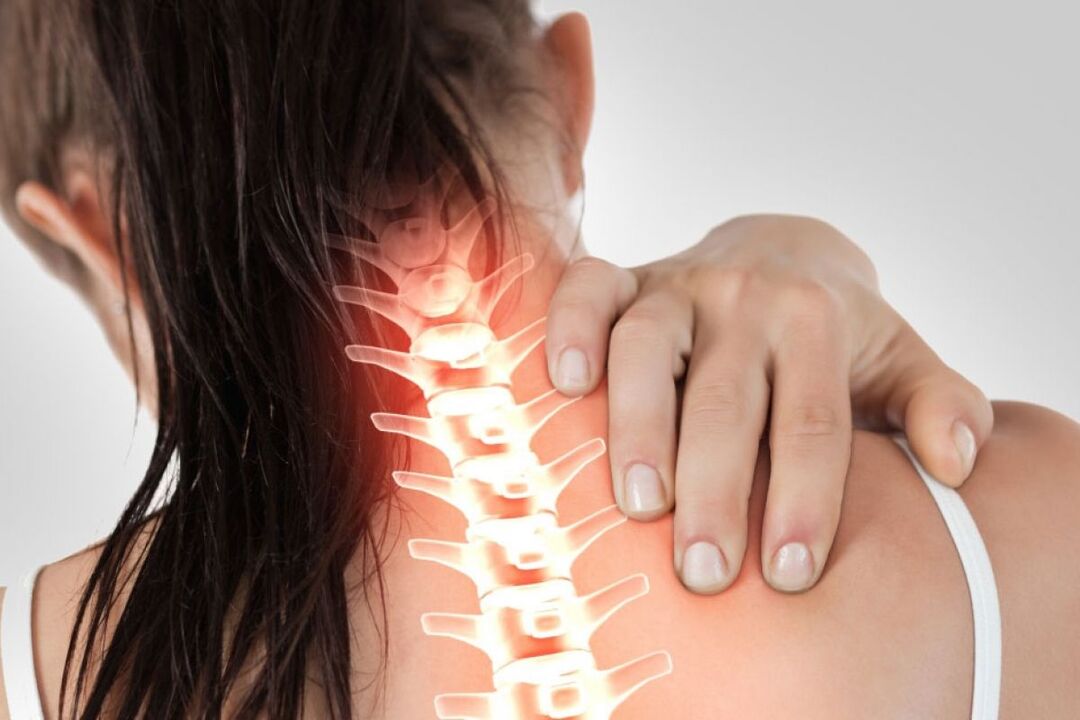Osteochondrosis is the process of degeneration, aging, degradation and bone formation of cartilage tissue. To understand the problem of osteochondrosis, you need to imagine the structure of the spine: it consists of 35 columns, which are placed on top of each other in a column that forms the spine. There are "cushions" between the vertebrae - cartilaginous discs (which act as shock absorbers and lubricants when the vertebrae move), the discs consist of a rigid multilayered ring and a liquid gelatinous core in the center.
To understand the problem of osteochondrosis, you need to imagine the structure of the spine: it consists of 35 columns, which are placed on top of each other in a column that forms the spine. There are "cushions" between the vertebrae - cartilaginous discs (which act as shock absorbers and lubricants when the vertebrae move), the discs consist of a rigid multilayered ring and a liquid gelatinous core in the center.
Symptoms of cervical osteochondrosis:
Everyone knows that the spine is structurally close. The upper vertebrae that make up the cervical region are long, slender, but very strong and mobile. However, their strength is not limited, especially when the daily stress on the neck exceeds the norm. The main causes of cervical lumbar osteochondrosis are always hidden in these loads.
How osteochondrosis of the cervical spine manifests itself also depends on the type of load and the location of the damage to the vertebral discs: each nerve root is responsible for a specific work, so the manifestations of cervical osteochondrosis are very different. The development of the disease occurs in 4 stages. Each subsequent one is more difficult than the previous one.
Stage 1 cervical osteochondrosis:
How can our spine be protected from overuse and destructive physical activity (or inactivity)?
First of all, anxiety: tension, tingling, fever - these are the first signs of any disease of the spine.
Intervertebral osteochondrosis of the cervical spine begins with a feeling of tension in the muscles of the neck, their fatigue. The patient may feel a slight pain, crushed when turning and tilting his head. Such anxiety is often perceived as "probably chilled" or "tired of something. "
Don't forget! Pain is a sign, we can say the signal of our body, if it works, it's not just that. The pain cannot be ignored or combined with pills!
Step 2:
The patient already feels more pain when turning and tilting his head. Sometimes the pain spreads to the right or left arm, shoulder joint, and sometimes to the hand.
There are still rare headaches, fatigue, tiredness, unthinking condition by the nervous system (in women, the initial symptoms of cervical osteochondrosis are very similar to the cyclic symptoms of the reproductive system: headache, dizziness, weakness, fatigue).
Although the symptoms of cervical osteochondrosis are already apparent, there is every chance to prevent the development of the disease and complications in the second stage. It is especially important to prevent the development of hernias in the cervical spine, which can be dangerous with loss of mobility and disruption of blood supply to the brain.
Step 3:
In the third stage, the disease can already be considered indifferent, because at this stage the treatment of cervical osteochondrosis is already more difficult, and the destruction is often irreversible. Pain increases when intervertebral hernias begin to appear.
Persistent weakness and dizziness are also exacerbated by constriction of nerves and large blood vessels that feed the cerebral cortex. The pain is often given to the hands. The innervation of the muscles of the upper extremities is impaired, resulting in weakness. Numbness and tingling in the hands are common symptoms of tertiary degenerative disc disease of the neck.
Step 4:
The intervertebral discs have already been significantly destroyed and undergone major changes, each with hernias and protrusions that significantly affect the patient's well-being. In place of the destroyed discs, connective tissue is formed, which deprives the spine of elasticity.
Compression of nerves and blood vessels leads to loss of coordination. Pain, drowsiness, lethargy and dizziness are worse. Sounds in the ears attached to them. There is a high risk of disease that can cause osteochondrosis:
- When a vertebral artery is constricted by a hernia, it causes cerebral ischemia and develops to a stroke;
- Compression of blood vessels can lead to malnutrition in the cerebral cortex or lower parts. As a result - poor perception, loss of consciousness;
- Compression of the spinal cord can also be fatal.

























